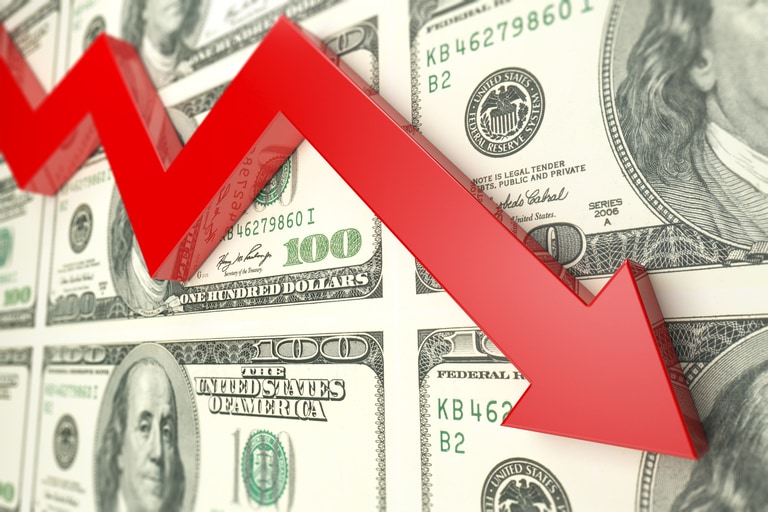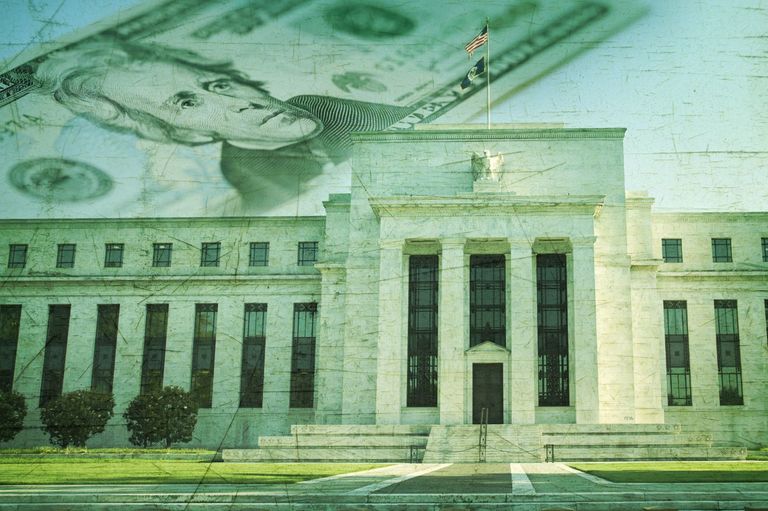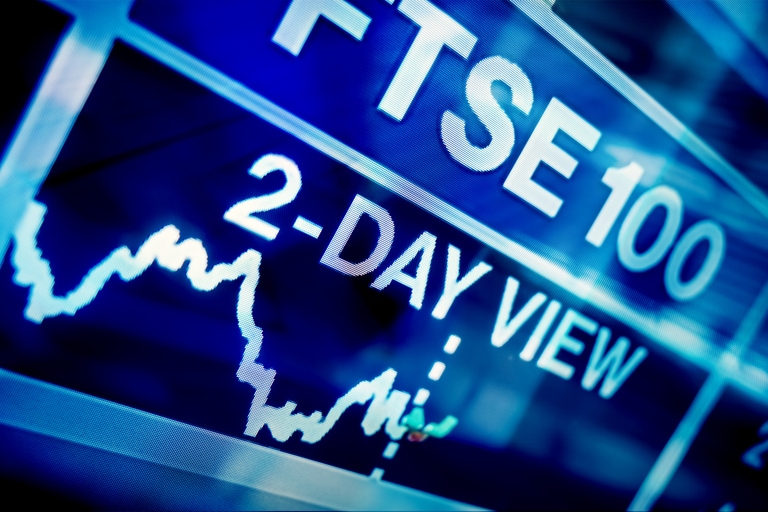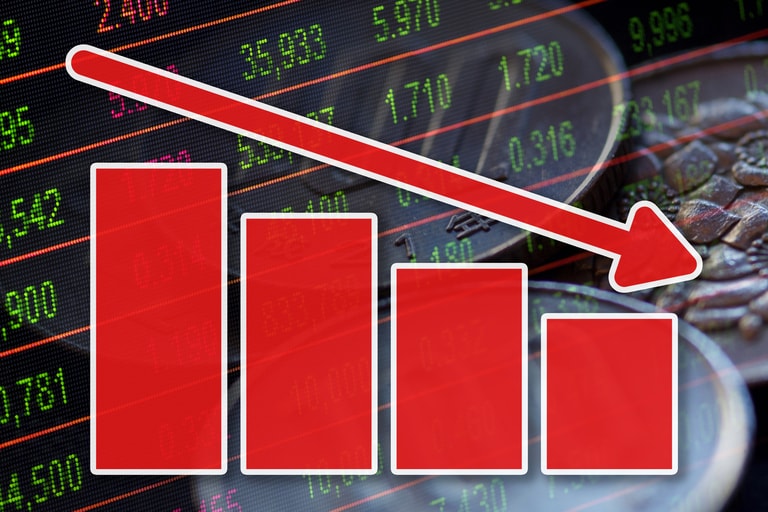This week’s key macroeconomic announcements include the UK’s inflation print for September and China’s Q3 GDP. On the company earnings front, Tesla, Netflix, Asos and Deliveroo are set to release their latest numbers.
OUR TOP THREE EVENTS FOR 17-21 OCTOBER:
Tuesday – China Q3 GDP
In Q2 China’s economy grew 0.4% year-on-year and contracted 2.6% on a quarterly basis as Covid lockdowns in various cities stifled growth. Annual growth slowed more than expected, declining from 4.8% in Q1. The data scotched any lingering hope that China’s economy might grow in line with the government’s target of 5.5% this year.
Since Q2, monthly economic data have improved following the easing of coronavirus restrictions. However, the government’s strict adherence to its zero-Covid policy has contributed to a stuttering, stop-start recovery in Q3. Retail sales have rebounded, growing 5.4% year-on-year in August, mainly driven by the release of pent-up demand as cities reopened. With industrial production also picking up in July and August, it seems likely that economic growth accelerated during the quarter. Consensus estimates suggest that China’s GDP grew 3.5% year-on-year in Q3.
Wednesday – UK CPI (September)
UK inflation eased slightly in August. The consumer price index (CPI) increased 9.9% in the year to August, down from 10.1% in July, as petrol prices fell. However, the drop in headline inflation masked the fact that food prices continued to rise, soaring 13.1% in the year to August, up from 12.7% in July, as the price of staples such as milk, eggs and butter all rose by more than 20%.
Core CPI, which excludes volatile energy, food, alcohol and tobacco prices, climbed 6.3% year-on-year in August, up from 6.2% in July. This rise in core prices is among the Bank of England’s key concerns, now that energy prices have stabilised somewhat. The Bank could become more aggressive on interest rates in the short term as it seeks to tame inflation. However, the new government’s fiscal plans make the Bank’s task of deciding how much to raise rates next month much more difficult.
Another factor that will influence the Bank’s decision is wage growth. Average total pay including bonuses grew 6% on an annual basis from June to August. This means that in real terms, after adjusting for inflation, total pay fell 2.4% year-on-year. A sharp increase in interest rates could exacerbate the cost-of-living squeeze for borrowers and mortgage payers.
Wednesday – Tesla Q3 results
Tesla will need a record second half if it is to hit its full-year target of delivering 1.3m vehicles. The electric carmaker seems to be within reach of that goal, though CEO Elon Musk acknowledged back in July that it will be a challenge, saying that production was the main issue facing the business.
Musk also set an annual production target of 2m vehicles per year from 2023. After announcing that target in August, Tesla’s share price slid back towards this year’s low as Musk sold $6.9bn of his own shares, according to a regulatory filing. The sale was perhaps part of his plans to buy Twitter.
In the first half of this year, Tesla delivered 565,000 vehicles, of which roughly 255,000 were delivered in Q2. While Q2 profits surprised to the upside, revenue slipped below the level of the previous two quarters and operating margin shrank to 27.9% from 32.9% in Q1.
This month the company announced that in Q3 it delivered 343,830 vehicles, bringing the year-to-date total to about 909,000 deliveries. The automaker must therefore deliver just shy of 400,000 vehicles in Q4 to hit its annual target. The Q3 total came in slightly below expectations, partly because production was impeded as upgrades to Tesla’s Shanghai factory resulted in shutdowns in July. Q3 profits are expected to come in at $1.04 a share.
Two months ago, shareholders approved a three-for-one stock split, making individual shares more affordable to retail investors from 25 August.
KEY EVENTS OVERVIEW (17-21 OCTOBER):
Monday 17 October
No major announcements
Tuesday 18 October
China Q3 GDP
See top three events, above
China retail sales (September)
China's retail sales rose 5.4% year-on-year in August – the strongest uptick for 12 months – as post-lockdown economic reopening in various cities unleashed a wave of pent-up demand. It seems doubtful that this kind of growth rate can be sustained while the Chinese government sticks to its zero-Covid policy, especially as coronavirus cases are likely to increase as the country heads into winter. This could translate into fairly subdued demand going forward.
So, while we can expect retail sales growth of about 3.2% in September to round off an improved Q3, the potential for further growth in the final three months of the year is likely to be constrained by economic uncertainty and the prospect of more lockdowns.
Meanwhile, industrial production – which rose 4.2% year-on-year in August, up from 3.8% in July – is expected to have increased by 4.9% in September.
Netflix Q3 results
Netflix shares appear to have found a short-term base after a hard-fought rebound from May’s five-year low of $163. That said, at roughly $234 the stock is still down over 60% year to date.
The Q2 numbers in July appear to have been the catalyst for the slow recovery, as Netflix announced that it would be looking at a cheaper ad-based model. However, the outlook for the business continues to look challenging amid competition from deep-pocketed rivals such as Amazon, Disney and new entrant Paramount+.
Netflix’s new ad-based model is set to be introduced on 3 November and will cost up to $7 a month. There is a risk that the addition of an ad-based model could cannibalise its premium offering as some customers are likely to trade down.
In Q2 the company lost subscribers for the second quarter in a row, albeit fewer than forecast. The loss of only 970,000 subscribers was a relief given that a 2m loss was expected. Revenues were a plus, rising 9% to $7.97bn. For Q3 Netflix said it hoped to start adding back subscribers, with hopes that they will see growth of 1m, reversing the decline in Q2.
Q3 revenue forecasts were lower than expected at $7.84bn, although that’s still a 4.7% increase on the same quarter a year ago. Profits forecasts also came in lower at $2.14 a share, below analyst estimates of $2.72 a share. Netflix reiterated that is expects a full-year operating margin of 19% to 20%.
The stronger US dollar is expected to have a material impact on the Q3 numbers. With 60% of revenue coming from outside the US, it is surprising that the board doesn’t have a strategy to mitigate this currency issue. With Netflix producing films and TV shows in more than 50 countries, and three out of its six most popular TV seasons featuring languages other than English, it should be monetising its global user growth much more efficiently. One wonders why shareholders aren’t more vocal about this gap in the company’s strategy.
Goldmans Sachs Q3 results
When Goldman reported Q2 numbers in July, the shares rallied strongly. Prior to those results the stock had been trading at lows last seen in January 2021. The rebound took the shares up to six-month highs in August, but since then the stock has slipped back amid concerns over the impact of the Fed’s tightening cycle and the outlook for the US and global economy.
The New York-headquartered investment bank has always been strong on the trading side of the business. In Q2 revenue rose 32% to $6.47bn, with strong beats on fixed income instruments, currencies and commodities (FICC) and equity trading. Revenue from FICC came to $3.61bn, while equity trading revenue hit $2.86bn. This outperformance helped offset lower-than-expected revenue in investment banking and equity underwriting.
In Q1 the group set aside $561m to cover potential losses from bad loans in its credit card division, and in Q2 this was topped up with a further $667m. Profits in Q2 were lower than in Q1, coming in at $7.73 a share, though this was still ahead of expectations of $7.05. The bank said it would increase its dividend by 25% to $2.50 a share in Q3. When the Q3 numbers come out on Tuesday, the key areas to watch out for are loan loss provisions and the outlook for Q4.
Wednesday 19 October
UK CPI (September)
See top three events, above
EU CPI (September)
After the eurozone’s consumer price index (CPI) rose by a record 9.1% in the year to August, economists expected the September reading to be even worse. A preliminary estimate released at the end of September suggested that CPI had increased 10% year-on-year, hitting double digits for the first time as businesses came under pressure to pass price increases on to consumers. By way of illustration, producer price inflation (PPI) in Germany hit 45.8% in August.
For several months, there has been a massive mismatch between CPI and PPI. It now appears that the headline CPI numbers are accelerating. Core CPI also increased, reaching 4.8% in September, according to the preliminary reading, up from 4.3% in August.
The main reason EU CPI isn’t even higher is because countries like France are suppressing inflation with price caps. In Germany headline inflation hit 10.9% in the year to September, up from 8.8% in August.
Wednesday’s final reading of eurozone CPI is likely to confirm the flash estimate, putting the European Central Bank under pressure to implement another 75-basis-point rate hike at its next meeting on 27 October.
Tesla Q3 results
See top three events, above
Asos full-year results
The Asos share price has declined more than 90% from the highs of February 2021, and is now trading at record lows. In the first half of this year the fast-fashion retailer reported a half-year loss before tax of £15.8m, compared to a profit of £106.4m a year earlier, even as revenue increased to just over £2bn. In the six months to the end of February higher freight costs and wages squeezed profit margins, which fell to -0.2% from 5.6% in the year-ago period.
In June the company reported that Q3 revenue – covering the three months to the end of May – had fallen to £983.4m, versus £987.9m a year earlier. That prompted Asos to lower its full-year revenue guidance, downgrading its sales growth forecast to 4-7% from 10-15%. Full-year profits were likely to be in the region of £20m to £60m, the company said. Higher costs would act as a drag, the company added. In a further update in September, Asos said that profits would be closer to the bottom end of guidance – between £9m and £43m – with total sales growth at 3.2%.
Thursday 20 October
Snap Q3 results
The social media company formerly known as Snapchat has in the past been the canary in the coal mine for the social media space, often giving investors advance warning of what to expect when it comes to ad sales and consumer behaviour across the sector. In Q2 Snap’s numbers prompted a sharp fall in the company’s share price, which hit a two-year low. Shortly afterwards, we saw similar weakness in Meta and Alphabet shares.
Snap shares have flatlined since the July low. In Q2 revenue came in at $1.11bn, up 13% year-on-year, but below expectations of $1.14bn. Losses came in higher than expected at $442m, a loss of $0.02 a share. The company declined to offer specific guidance for Q3, other than to say that revenues were expected to be flat.
The app tracking rules that Apple introduced last year appear to be continuing to exert a greater adverse effect on Snap than on its peers. Snap is looking to address a slowdown in ad revenue by bringing in a new subscription service, Snapchat+. Losses for Q3 are expected to come in at $0.03 a share.
Friday 21 October
UK retail sales (September)
As one would expect, retail trade has taken hit during this year’s cost of living crisis. Retail sales in the UK fell 1.6% month-on-month in August, the biggest decline of the year so far.
Meanwhile, data from the British Retail Consortium indicate that UK retail sales increased 0.5% year-on-year in August. However, it remains to be seen whether we’ll see further growth in the September numbers.
While the UK narrowly avoided an economic contraction in Q2, when GDP grew 0.2% compared to Q1, it appears that a decline may be on the cards for Q3 – unless we witness a Lazarus-like comeback in consumer spending in September.
Deliveroo Q3 results
Having tumbled more than 60% this year, the Deliveroo share price currently sits at around 76p, just above its record low. The company seems to be struggling to convince investors that its business model can deliver the type of talked-about returns that generated so much pre-IPO optimism in early 2021, when it floated at 390p.
Following the release of the last set of numbers in August, the shares did initially pop higher. However, the improvement in its numbers over the past few quarters has been overshadowed by underperformance across the food delivery sector, with its biggest rival Just Eat seeing its own shares taken out to the woodchipper by the market after it offloaded its GrubHub stake for a fraction of what it initially paid.
Deliveroo has grown over the last 15 months. Its full-year numbers, released back in March, showed that revenue was up 57% at £1.82bn. But losses also increased to £298m from £213m in 2020, while margins tightened from 8.7% to 7.5%, as market and overhead spend rose by 75% to £628.7m.
Deliveroo has made progress of late, signing deals with Amazon and Waitrose that helped push gross transaction value (GTV) in Q1 up 11% year-on-year to £1.79bn. In the first half of this year, GTV rose 7% to £3.6bn, within the range of revised guidance of 4-12% growth for this year. That helped push half-year revenue to just over £1.01bn and gross profits up by 16% to £300.9m.
However, after taking marketing overheads into account, Deliveroo posted a half-year EBITDA loss of £68m. While the company said that it had taken steps to reduce costs, marketing and overheads as a percentage of GTV were higher than a year ago at 10.4%. The upcoming Q3 numbers are likely to confirm that Deliveroo is on course to post revenue of over £2bn this year, but the company needs to show that it can generate a profit. The jury is still out on that.
InterContinental Hotels Group Q3 results
Back in August, Holiday Inn owner InterContinental reported that business in the US was leading its recovery from the pandemic, while lockdowns in China were acting as a brake on its Asia operations. The US business saw Q2 RevPAR increase 3.5% on 2019 levels. In the Greater China region, however, RevPAR declined 48.9%.
Half-year revenue came in at $840m, up 49% versus the year-ago period, but slightly below expectations. The most profitable region was the US, which accounted for $351m of the $377m operating profit during the half. The hotel chain also reinstated its dividend and announced a $500m share buyback.
However, since the release of those numbers in August the shares have slipped back to the level of the June lows, as the darkening economic outlook has weighed on investor sentiment towards the hotel sector. IHG was also negatively affected in September when a data hack disrupted its booking systems and generated unwelcome publicity regarding the company’s handling of customer data.
INDEX DIVIDEND SCHEDULE
Dividend payments from an index's constituent shares can affect your trading account. View this week's index dividend schedule.
SELECTED COMPANY RESULTS
| MONDAY 17 OCTOBER | RESULTS |
| Bank of America (US) | Q3 |
| Bank of New York Mellon (US) | Q3 |
| Charles Schwab (US) | Q3 |
| Seraphim Space Investment Trust (UK) | Q1 |
| TUESDAY 18 OCTOBER | RESULTS |
| Albertsons Cos (US) | Q2 |
| Bellway (UK) | Full-year |
| Goldman Sachs Group (US) | Q3 |
| Johnson & Johnson (US) | Q3 |
| Netflix (US) | Q3 |
| Revolution Bars Group (UK) | Full-year |
| State Street (US) | Q3 |
| United Airlines Holdings (US) | Q3 |
| WEDNESDAY 19 OCTOBER | RESULTS |
| Abbott Laboratories (US) | Q3 |
| Asos (UK) | Full-year |
| Equifax (US) | Q3 |
| Nasdaq (US) | Q3 |
| Prologis (US) | Q3 |
| Tesla (US) | Q3 |
| WD-40 Co (US) | Q4 |
| Winnebago Industries (US) | Q4 |
| THURSDAY 20 OCTOBER | RESULTS |
| AT&T (US) | Q3 |
| Danaher (US) | Q3 |
| Dow (US) | Q3 |
| ManpowerGroup (US) | Q3 |
| Marsh & McLennan Cos (US) | Q3 |
| Philip Morris International (US) | Q3 |
| Snap (US) | Q3 |
| Union Pacific (US) | Q3 |
| FRIDAY 21 OCTOBER | RESULTS |
| American Express (US) | Q3 |
| Deliveroo (UK) | Q3 |
| Euronet Worldwide (US) | Q3 |
| InterContinental Hotels Group (UK) | Q3 |
| Schlumberger (US) | Q3 |
| Verizon Communications (US) | Q3 |
Disclaimer: CMC Markets is an execution-only service provider. The material (whether or not it states any opinions) is for general information purposes only, and does not take into account your personal circumstances or objectives. Nothing in this material is (or should be considered to be) financial, investment or other advice on which reliance should be placed. No opinion given in the material constitutes a recommendation by CMC Markets or the author that any particular investment, security, transaction or investment strategy is suitable for any specific person. The material has not been prepared in accordance with legal requirements designed to promote the independence of investment research. Although we are not specifically prevented from dealing before providing this material, we do not seek to take advantage of the material prior to its dissemination.







